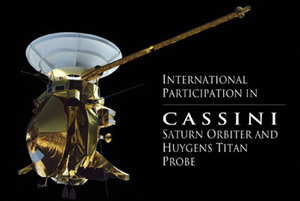An image of the Cassini spacecraft.
Click on image for full size
Courtesy of NASA
Cassini is Off!
News story originally written on October 16, 1997
Cassini has begun its 2.2 billion-mile journey to Saturn. Cassini was launched on a Titan rocket from Cape Canaveral Air Force Station early in the morning on October 15, 1997.
The Cassini probe is one of the largest interplanetary spacecraft ever launched. It is about two stories tall and weighs more than six tons! Efforts have truly been collaborated for this mission as there are over 33 U.S.states and 16 countries among Cassini contributors.
The Cassini mission will cost 3.3 billion dollars when all is said and done. By studying Saturn's planetary system, scientists hope to learn more about the solar system that is Earth's home.
You might also be interested in:
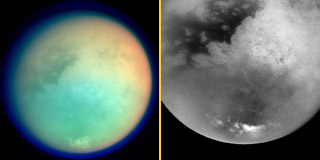
The robotic Cassini spacecraft flew by Saturn's moon Titan on October 26, 2004. Titan is Saturn's largest moon, and has the thickest atmosphere of any moon in our Solar System. Cassini captured what are
...more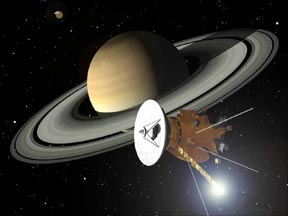
The Cassini spacecraft, en route to Saturn, will zoom past Saturn's odd moon Phoebe on June 11, 2004. Cassini will pass within 2,000 km (1,243 miles) of the moon's surface and should send back images with
...more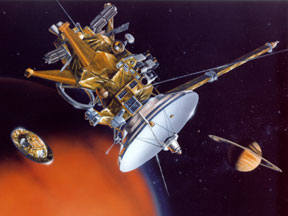
NASA's Cassini spacecraft, which is in orbit around Saturn, released the Huygens probe and sent it on its way to Saturn's largest moon, Titan. The probe, pushed away from the Cassini "mothership"
...more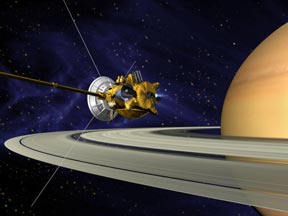
The Cassini spacecraft will arrive at Saturn on June 30, 2004. Cassini's engine will make a critical 96-minute burn starting at 7:36 p.m. Pacific Time (10:36 p.m. EDT) on June 30. The burn will slow Cassini
...more
It was another exciting and frustrating year for the space science program. It seemed that every step forward led to one backwards. Either way, NASA led the way to a great century of discovery. Unfortunately,
...more
The Space Shuttle Discovery lifted off from Kennedy Space Center at 2:19 p.m. EST, October 29th. The sky was clear and the weather was great as Discovery took 8 1/2 minutes to reach orbit for the Unitied
...more
A moon was discovered orbiting the asteroid, Eugenia. This is only the second time in history that a satellite has been seen circling an asteroid. A special mirror allowed scientists to find the moon
...more


